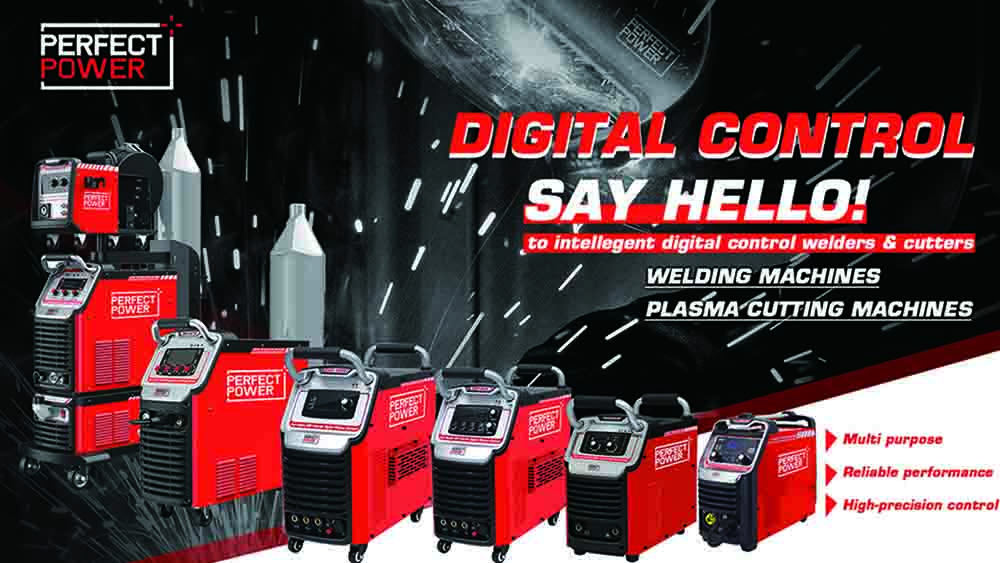
The Southeast Asian welding equipment market is on fire, projected to grow by 17% in 2024—nearly triple the global average. From Indonesia’s $30B infrastructure push to Vietnam’s booming renewable energy sector, contractors are racing to meet demand. But with rapid growth comes fierce competition, supply chain bottlenecks, and pressure to deliver high-quality results on tight budgets.
In this blog, we break down the three critical drivers fueling this growth and reveal how next-generation welding technology—like 5-in-1 industrial welders—is helping businesses stay ahead. Whether you’re bidding on a solar farm in Thailand or a shipyard in Singapore, this guide will show you how to turn market trends into profits.

Driver 1: Mega Infrastructure Projects Demand Versatile Equipment
The Challenge
Governments across Southeast Asia are investing heavily in roads, ports, and urban transit. For example:
- Malaysia’s East Coast Rail Link ($10B)
- Philippines’ “Build Better More” program ($24B)
- Vietnam’s North-South Expressway ($14B)
These projects require welding stainless steel bridges, aluminum rail components, and thick carbon steel pylons—often in remote, power-scarce locations. Traditional single-process welders force teams to carry multiple machines, increasing costs and logistical headaches.
The Solution: 5-in-1 Multi-Process Welders
Machines like the MIG-500PW combine MIG, TIG, flux-core, and MMA welding in one unit, cutting equipment costs by 40%. Key features for infrastructure teams:
- Dual IGBT Modules: Handle 15mm steel for pylon bases and 1mm aluminum for lightweight structures.
- Gasless Flux-Core Mode: No gas cylinders needed for remote bridge welding.
- Robot Integration: Automate repetitive tasks (e.g., welding rebar) to meet tight deadlines.
Driver 2: Renewable Energy Expansion Needs Precision Welding
The Challenge
Southeast Asia aims to derive 35% of its energy from renewables by 2025, driving demand for solar farms, wind turbines, and hydropower plants. These projects require:
- Flawless aluminum welds for solar panel frames (0.8–2mm thickness).
- High-purity stainless steel joints for hydropower turbines.
- On-site repairs in humid, corrosion-prone environments.
Conventional TIG welders struggle with thin aluminum (burn-through) and outdoor humidity (arc instability).
The Solution: Advanced AC/DC TIG Welders
The TIG-400PI tackles renewable energy challenges with:
- 10A Minimum Current: Weld 0.8mm aluminum without distortion—critical for solar panel efficiency.
- Adjustable Clean Width: Remove oxides on stainless steel for corrosion-resistant hydropower pipelines.
- 3-Phase Heavy-Duty Cycle: Operate 12-hour shifts welding wind turbine bases (60% duty cycle at 300A).

Driver 3: Manufacturing Automation Requires Smarter Welders
The Challenge
Automotive and electronics factories in Thailand, Vietnam, and Malaysia are adopting robotics to meet export demand. However, most industrial welders lack:
- Compatibility with robotic arms.
- Precision for thin automotive sheets (0.6mm).
- Data tracking for quality control.
The Solution: Robot-Ready Synergic Welders
The MIG-500PW bridges the automation gap with:
- Communication Modules: Integrate with Fanuc/Yaskawa robots for high-speed production lines.
- Pulsed MIG Mode: Weld 0.6mm automotive steel with 30% less spatter.
- Parameter Memory: Save settings for 50+ jobs (e.g., motorcycle chassis vs. truck frames).
Case Study: A Vietnamese auto parts supplier reduced rework rates by 22% after switching to the MIG-500PW’s double-pulse function for thin-gauge welding.
Why Contractors Are Upgrading Now
Cost Pressures
With steel prices up 12% in 2024, wasting material on poor welds isn’t an option. The MIG-315L PRO reduces spatter by 50% vs. traditional welders, saving $4,200/year in material costs for mid-sized teams.
Talent Shortages
Southeast Asia faces a 200,000 skilled welder deficit. Machines with synergic controls (e.g., MIG-500PW’s auto-parameter adjustment) let junior staff achieve expert-level results.
Sustainability Requirements
Governments now mandate energy-efficient equipment. Inverter-based welders like the TIG-400PI cut power use by 30% compared to transformer models.
How to Choose the Right Welder for Your Business
| Your Priority | Recommended Model | ROI Example |
|---|---|---|
| Multi-site infrastructure | MIG-500PW (5-in-1 + robot-ready) | Save $18k/year on equipment transport |
| Solar/hydro precision | TIG-400PI (10A thin welding) | 15% faster project completion |
| Budget-friendly durability | MIG-315L PRO (gasless flux) | 40% lower maintenance costs |
“We’re Booked for 6 Months—Upgrading Was the Only Way to KeepUp.”
—Mr. Tran, Owner of a Thai Civil Engineering Firm
After switching to 5-in-1 welders, Tran’s team secured 3 highway contracts worth $2.7M. “The MIG-500PW’s dual pulse mode cut our aluminum welding time by half. Now we’re bidding on bigger projects.”
Ready to Tap into Southeast Asia’s Welding Boom?
The region’s growth won’t slow down, but outdated equipment will hold you back. Whether you’re welding offshore wind platforms in Indonesia or EV battery racks in Malaysia, the right technology is your ticket to winning more bids.
Next Step: Contact our sales engineers for a free workflow analysis. Share your project specs, and we’ll match you with a welder that maximizes productivity and ROI—plus local service support and flexible financing.
Act Now:
📞 Call +8613925131639 (ASEAN hotline)
📧 Email [email protected]
💬 WhatsApp: +8613925131639 (quote “PPW” for priority response)



